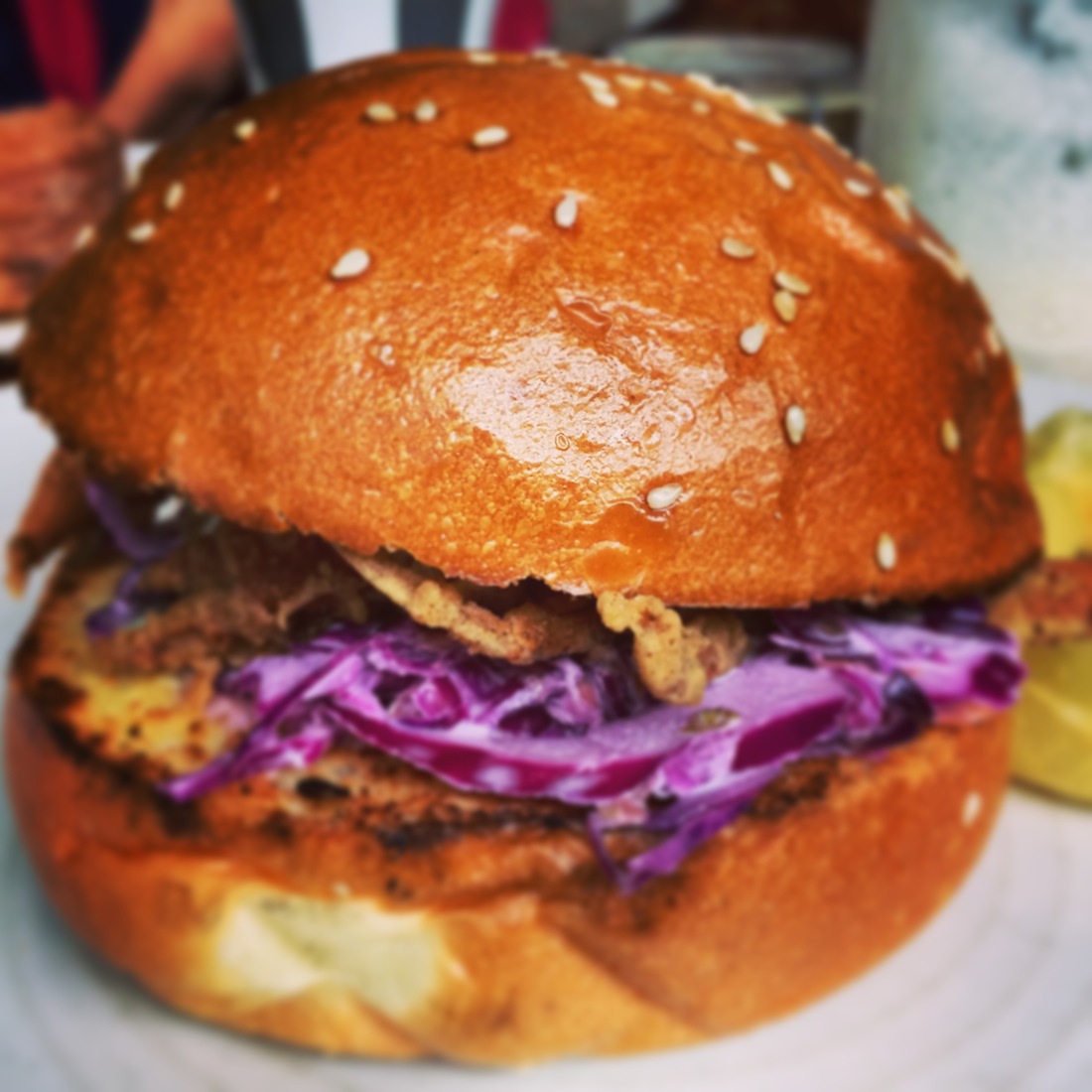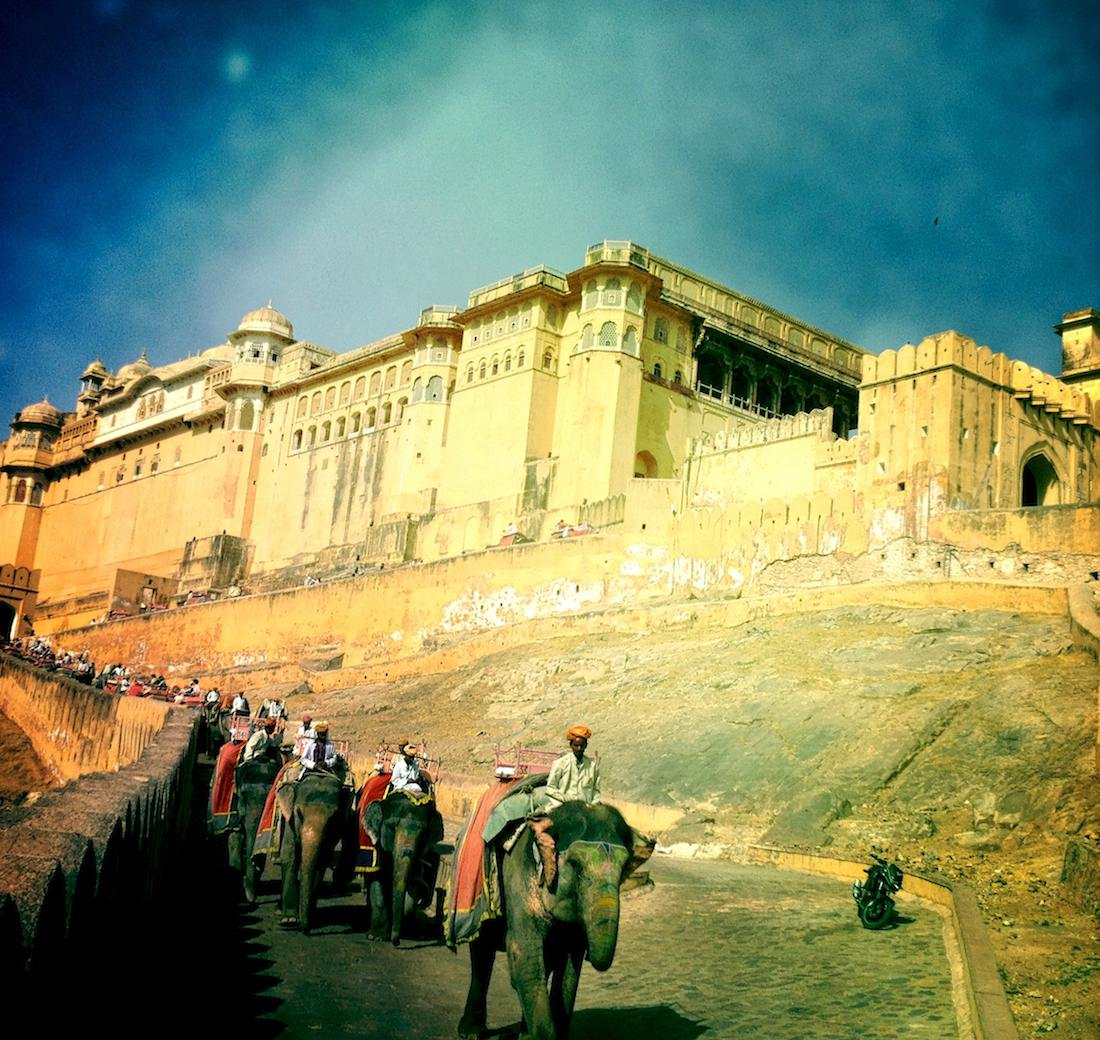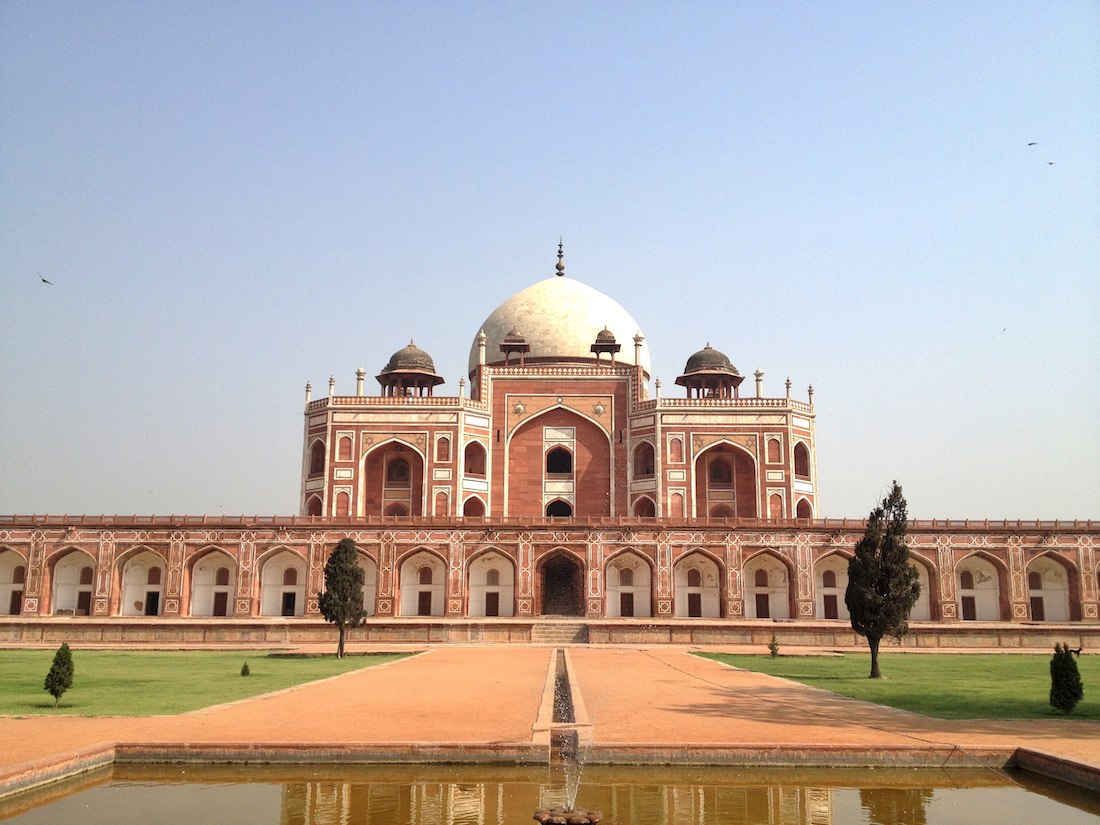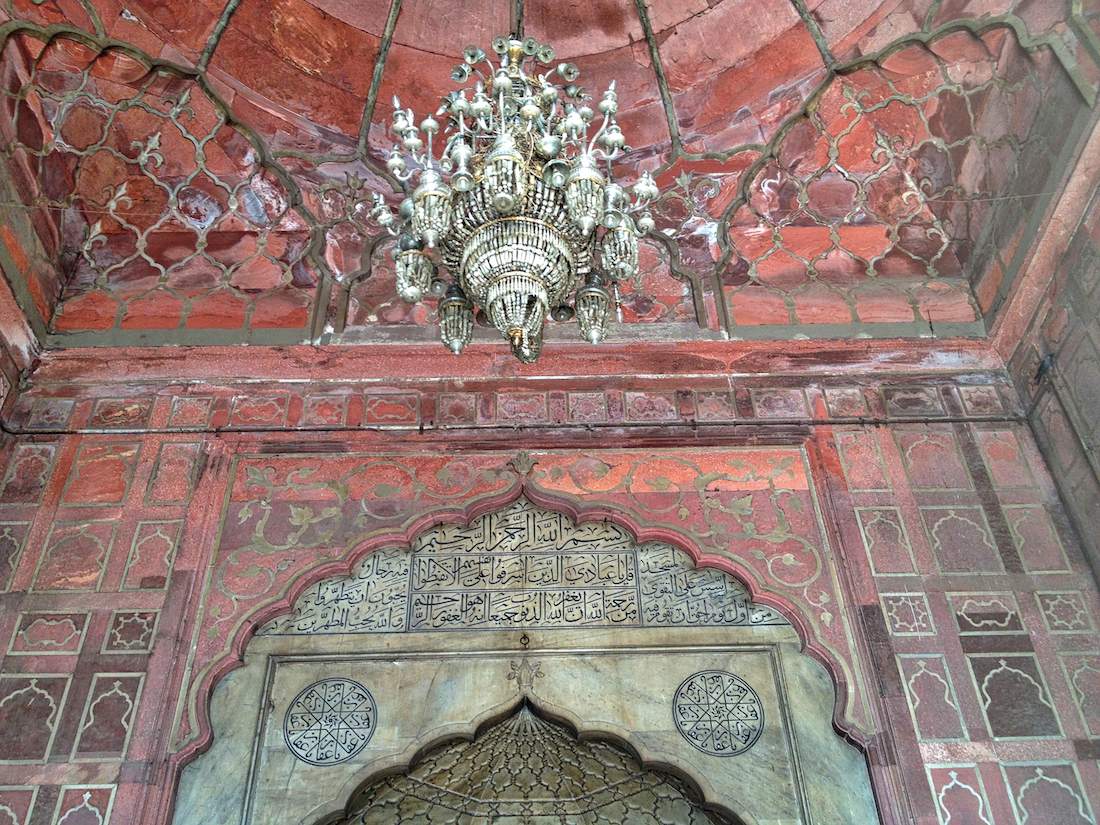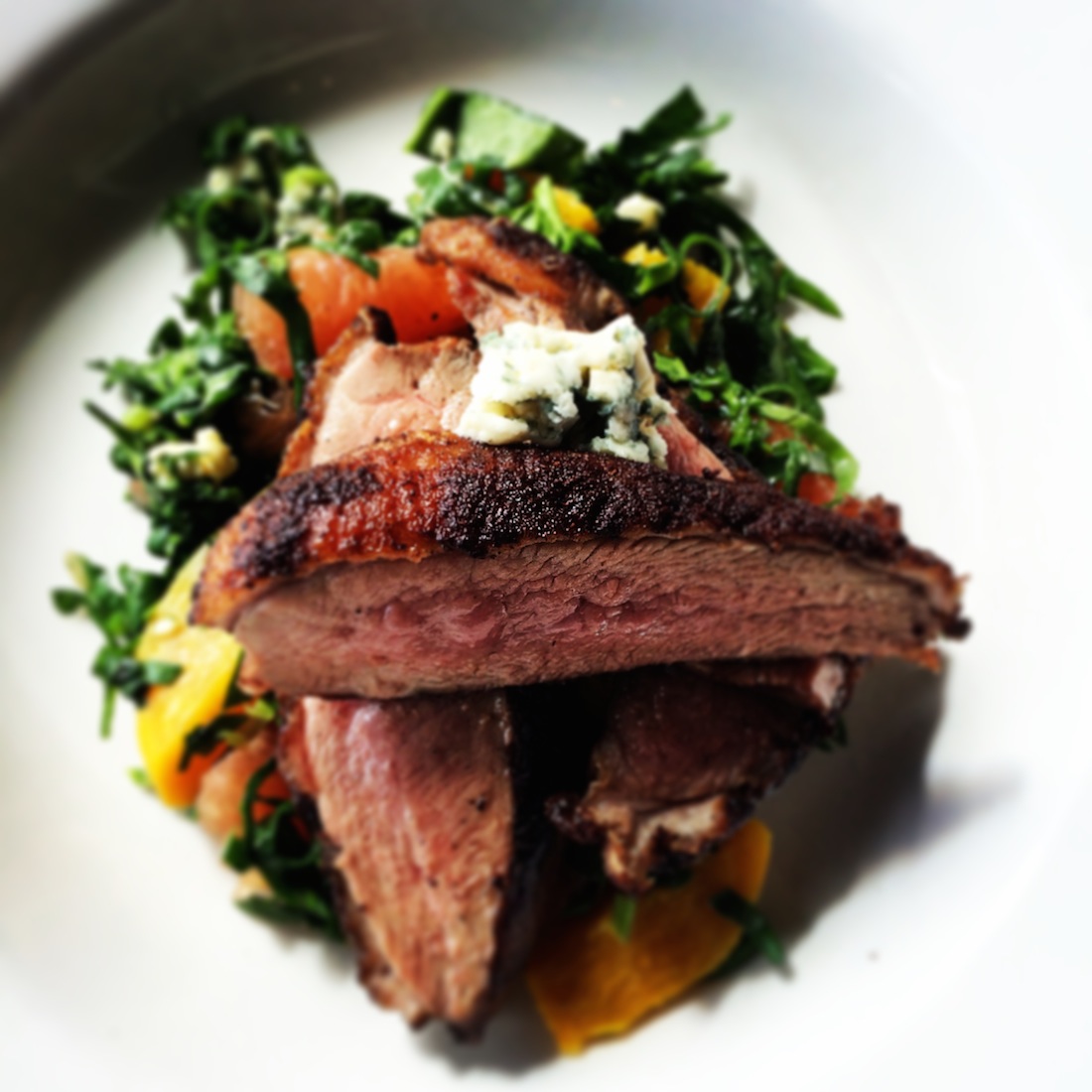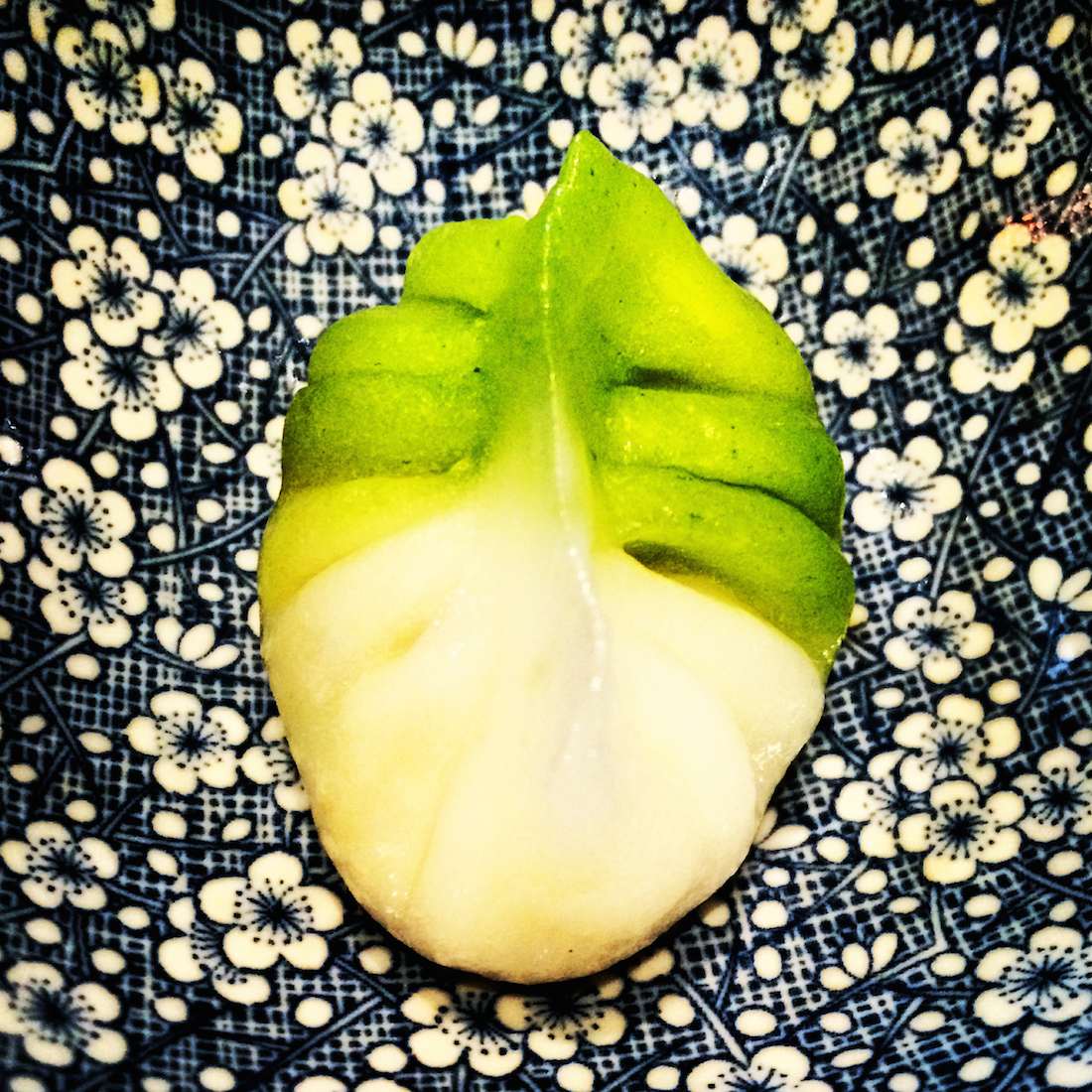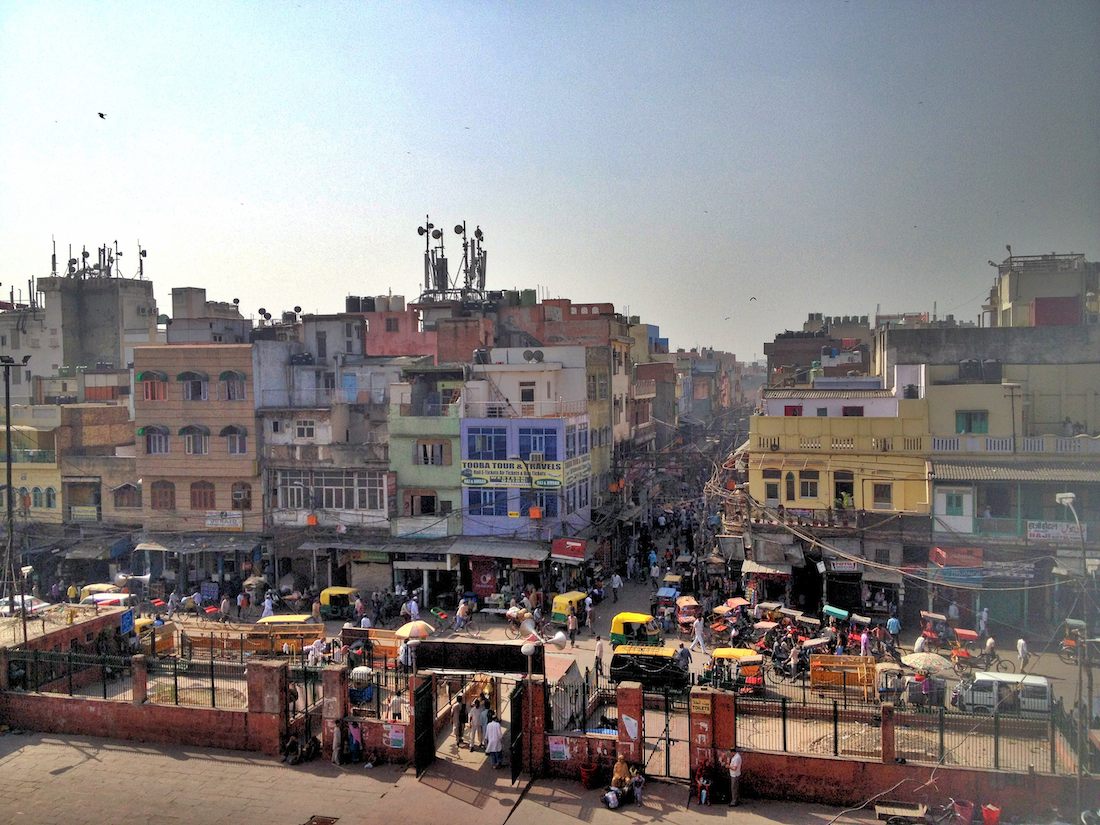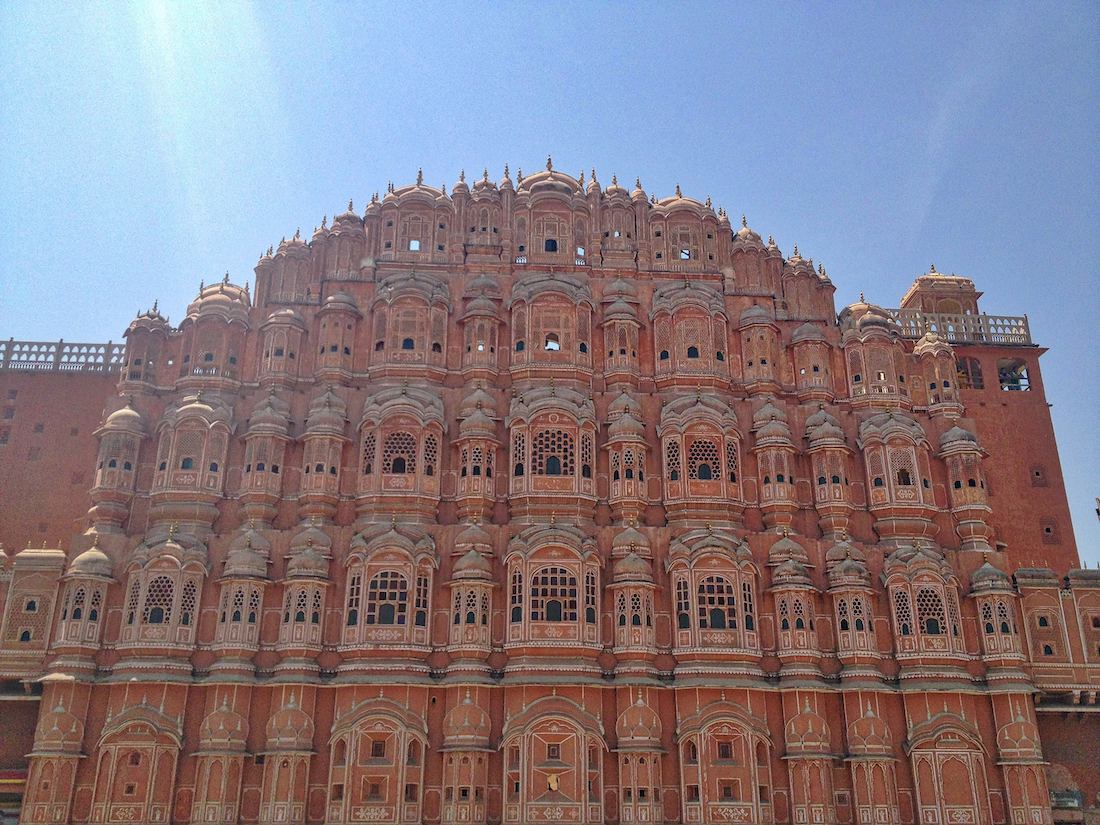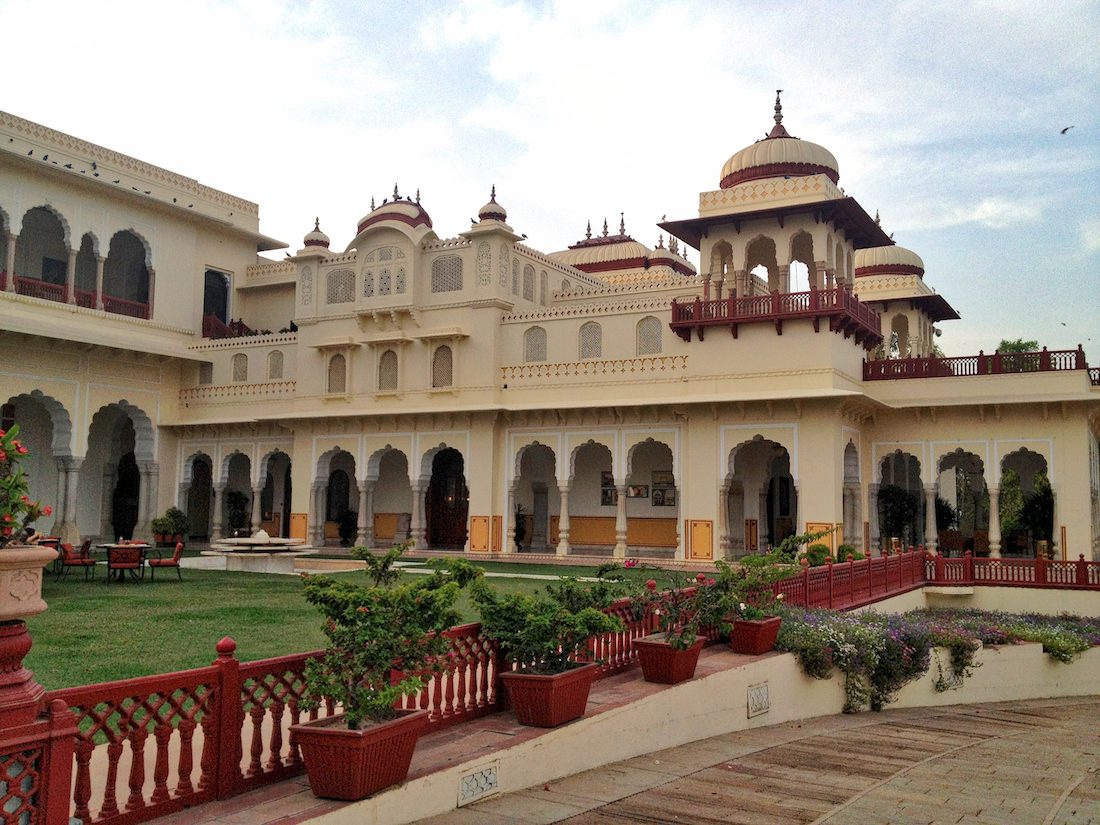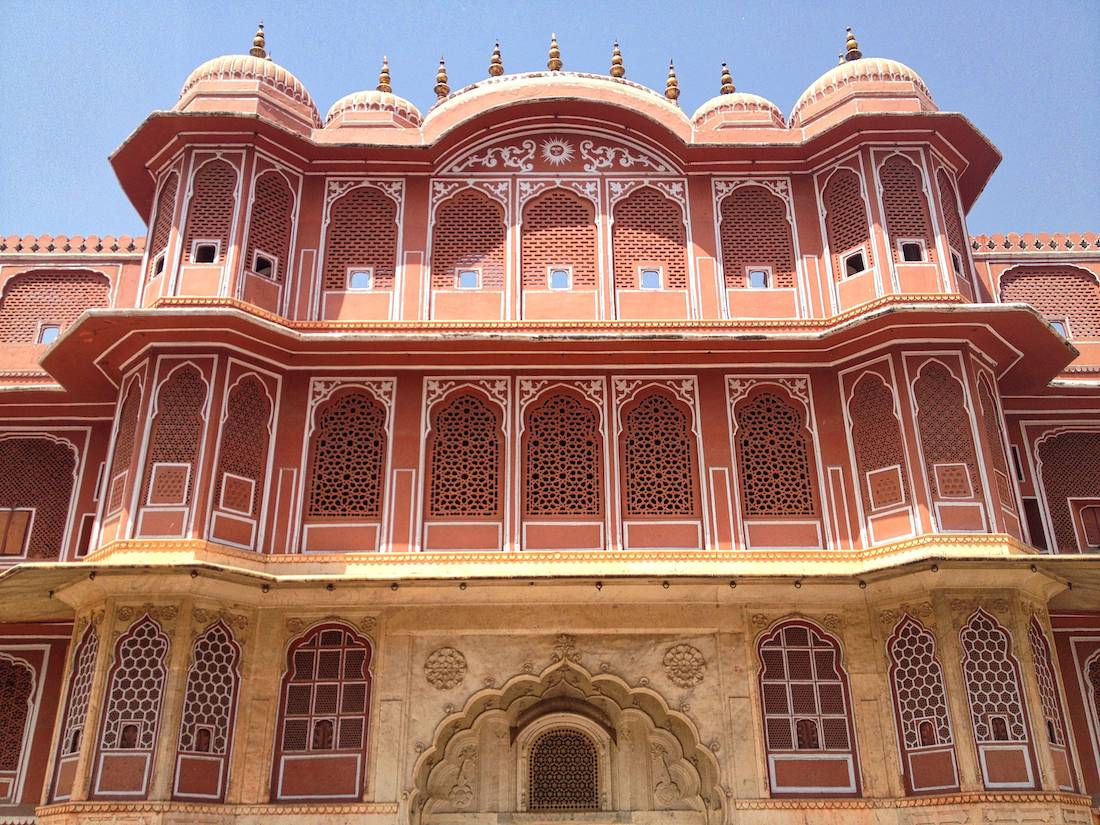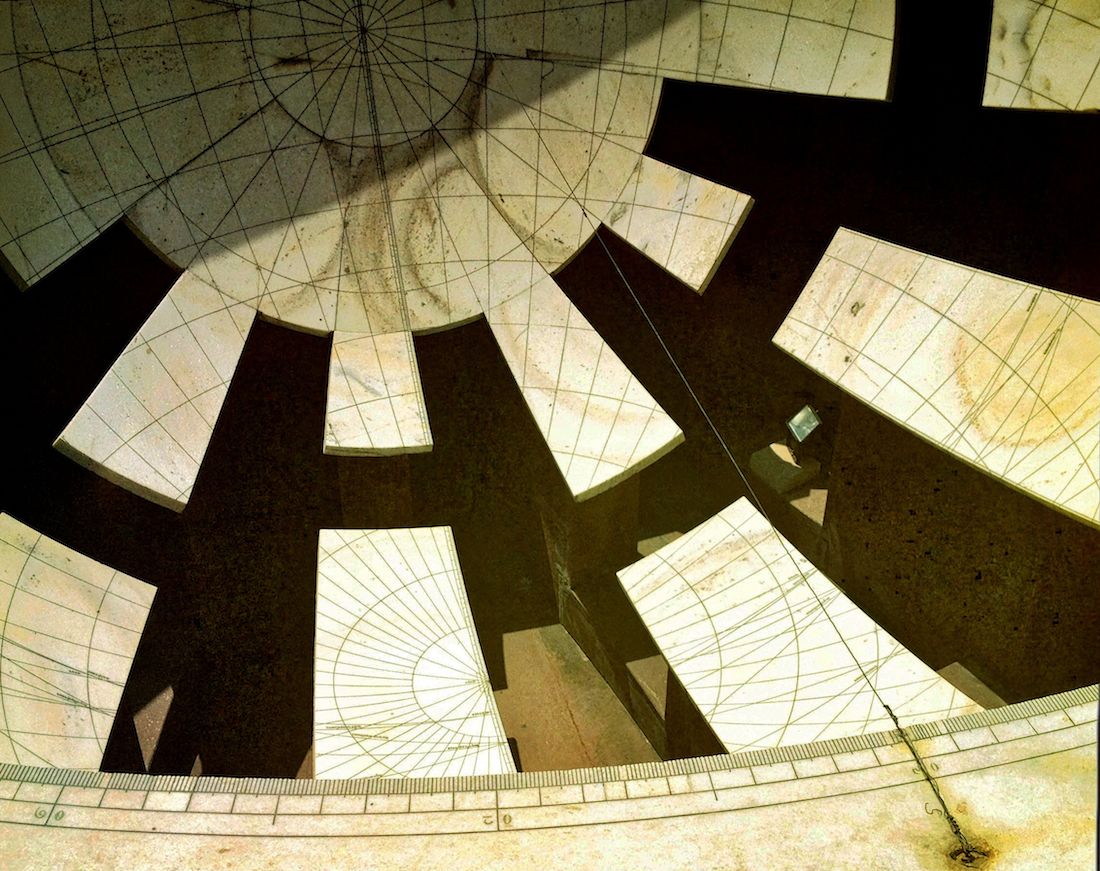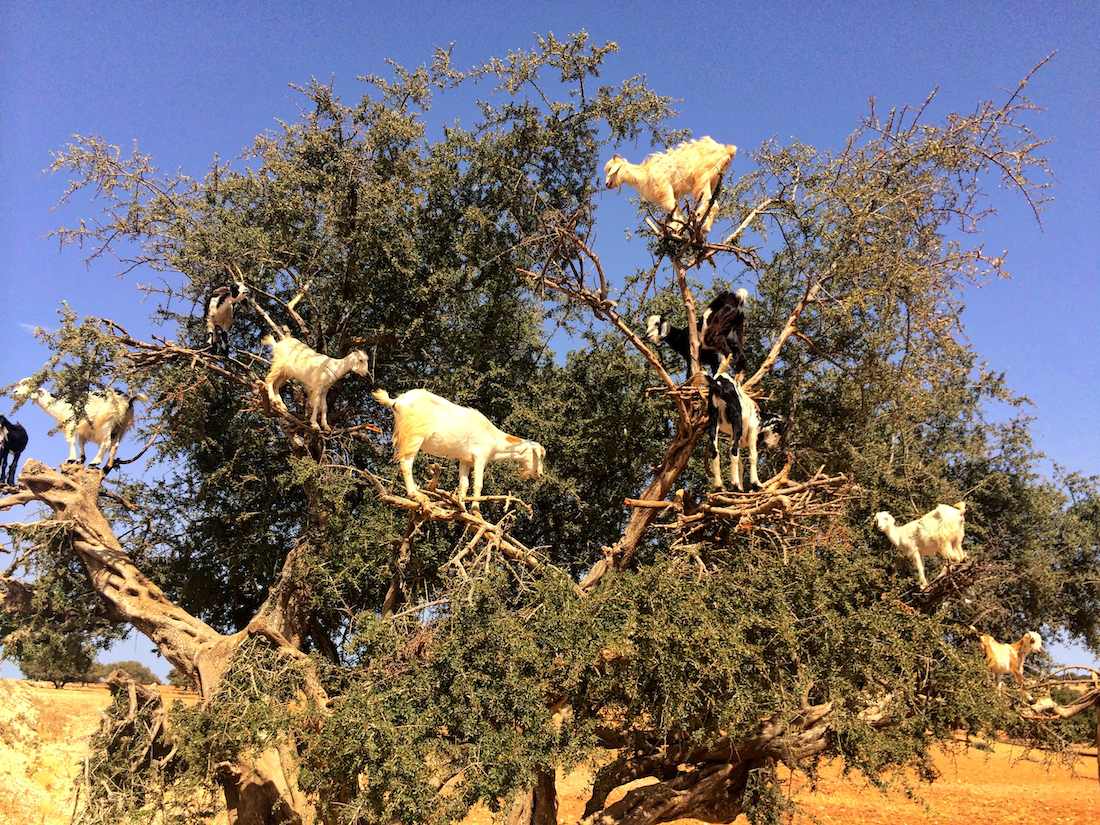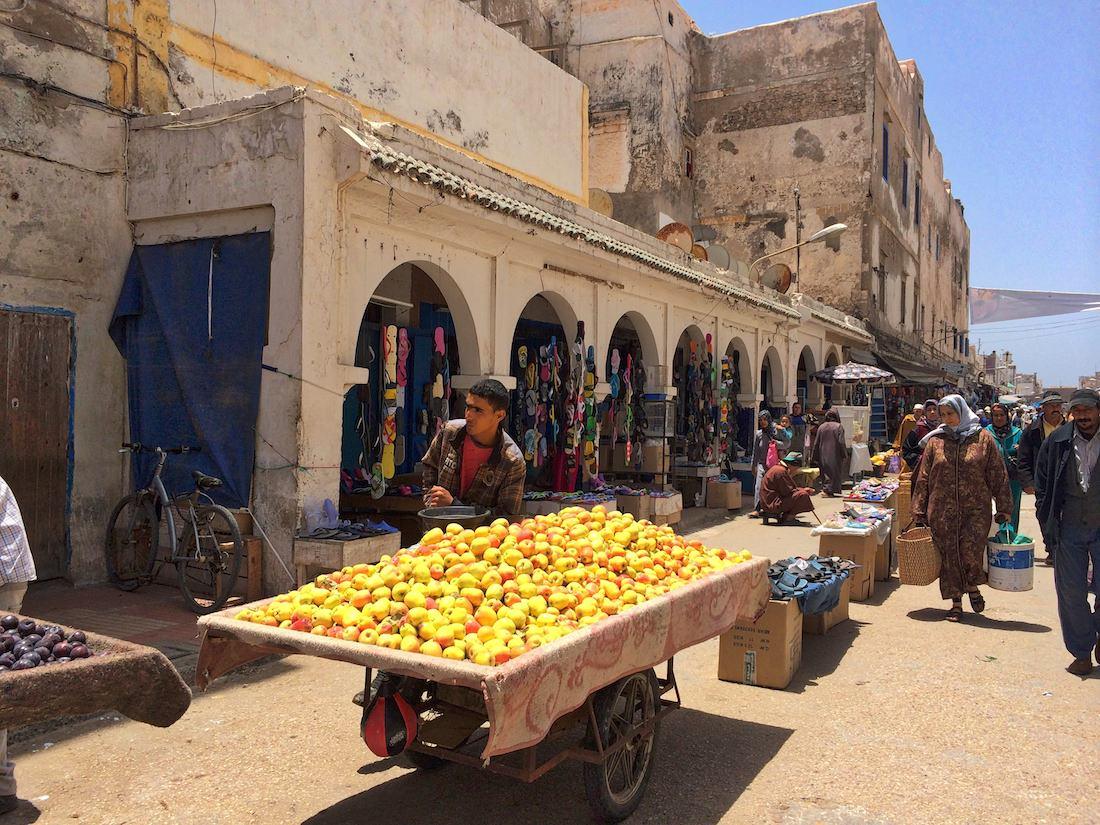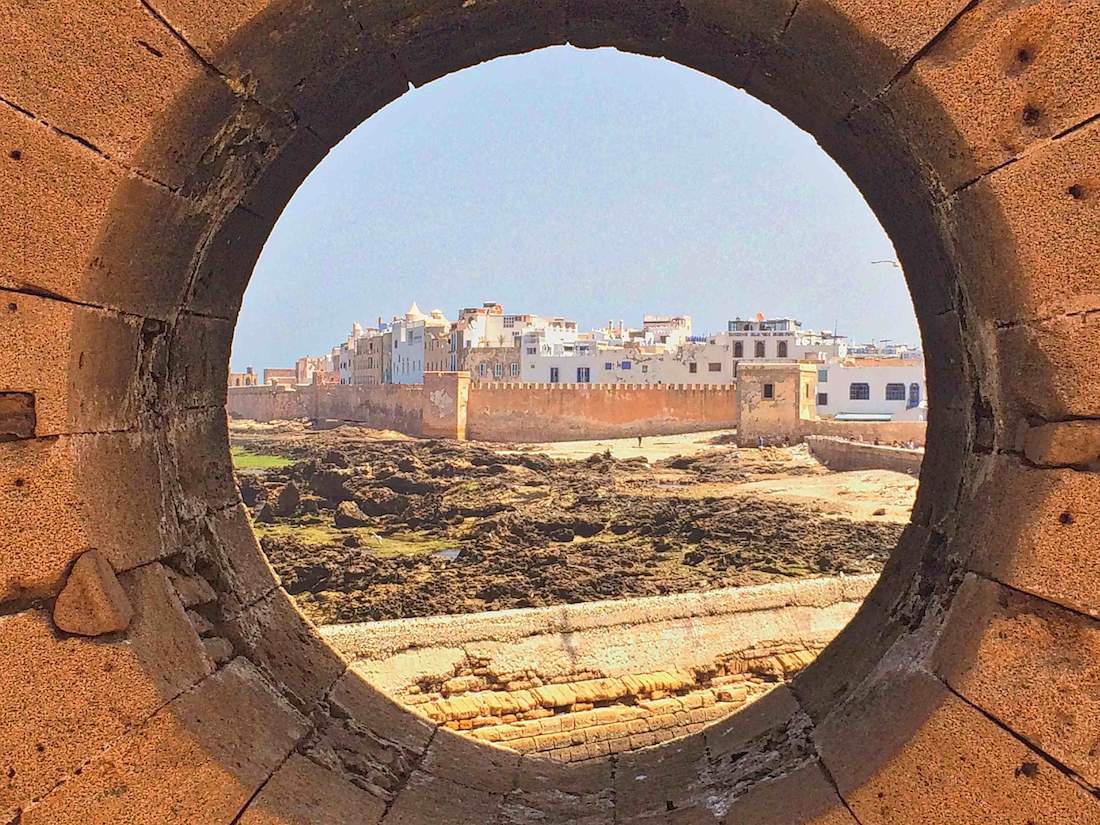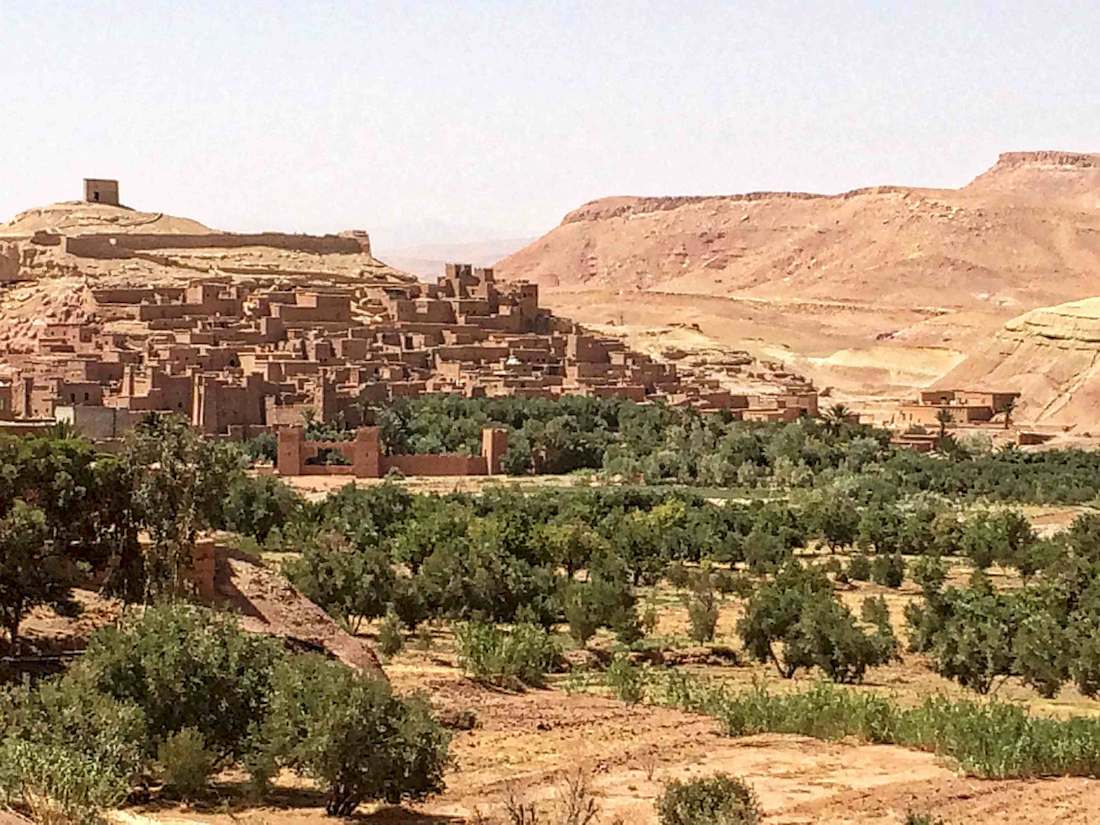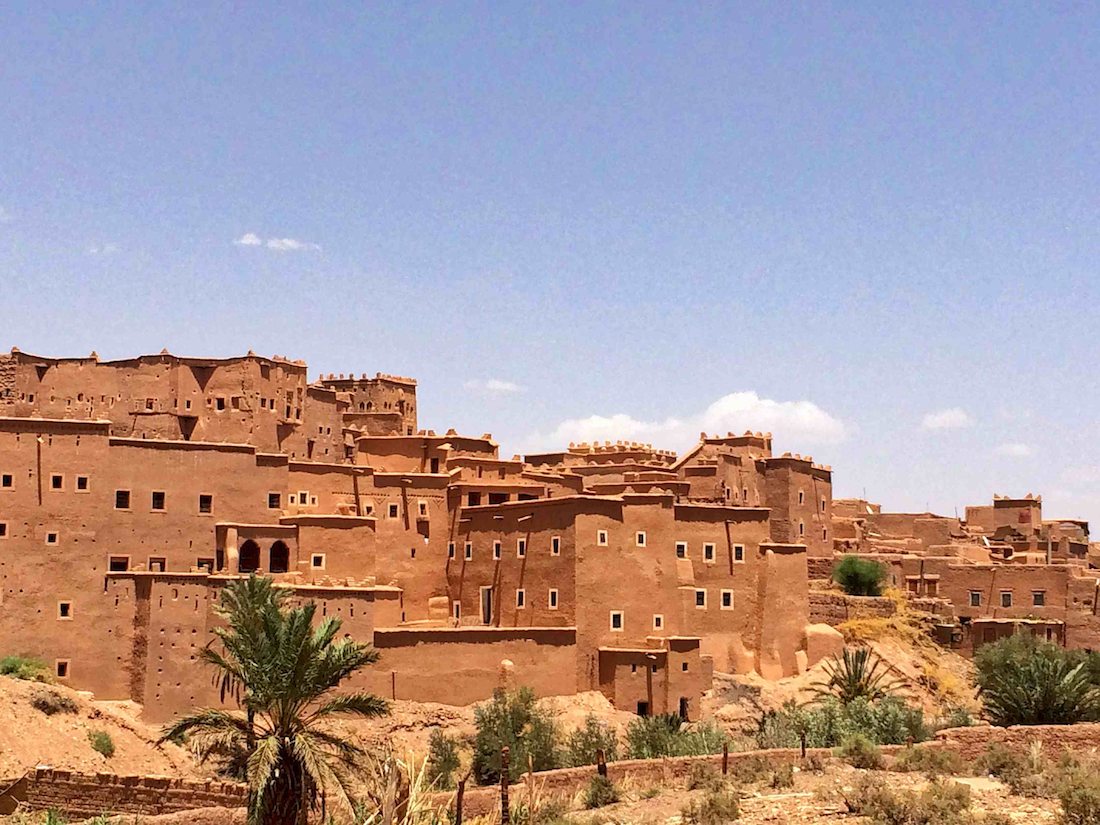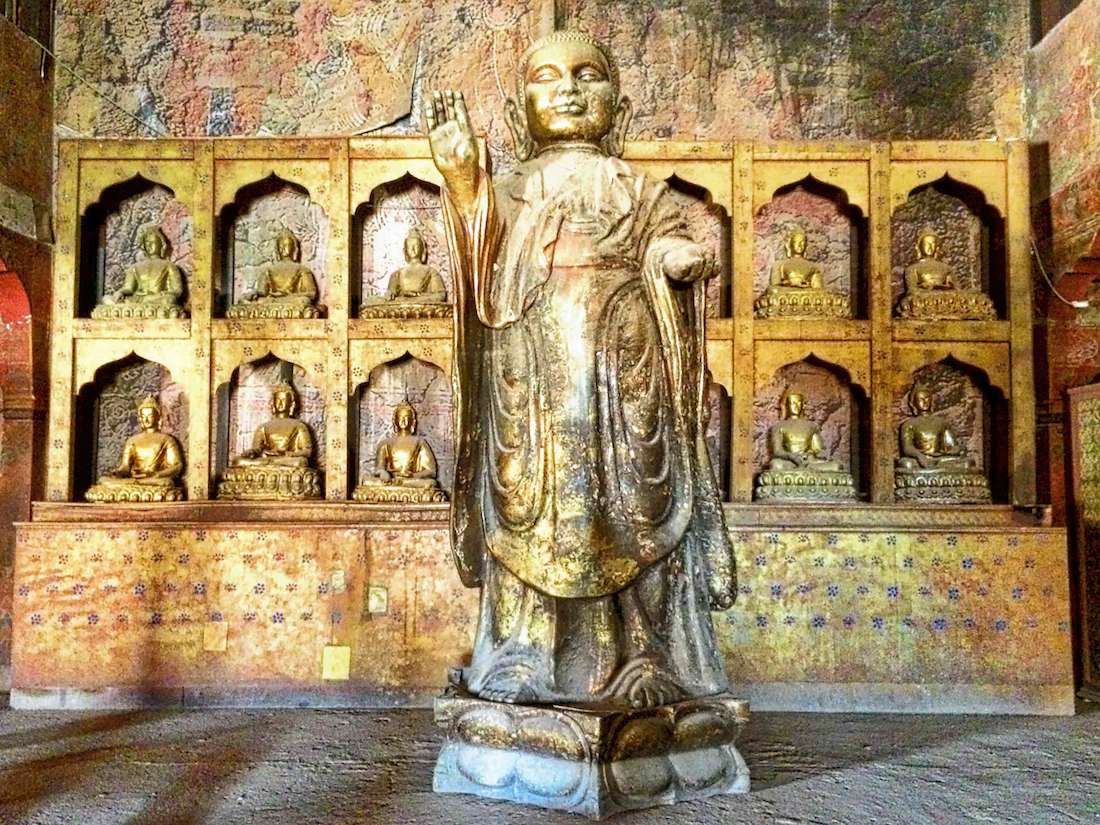Crab Poboy at The Paramount Coffee Project – 80 Commonwealth st, Surry Hills, New South Wales, Australia 2010
Amer Fort
The Amer Fort (also known as The Amber Fort) is located in Amer, 11 kilometres (6.8 mi) from Jaipur, in Rajasthan India and is one of the most famous forts of Rajasthan and a UNESCO World Heritage site. The Amer Fort was built by Raja Man Singh I in the 16th century and is known for its artistic style of Hindu elements combined with Muslim architecture. With its large ramparts, series of gates and cobbled paths, the fort overlooks the Maota Lake, at its forefront.
The opulent palace complex built with red sandstone and marble, consists of the Diwan-e-Aam or the “Hall of Public Audience”, the Diwan-e-Khas or the “Hall of Private Audience”, the Sheesh Mahal (mirror palace) and the Sukh Niwas where a cool climate is artificially created by winds that blow over the water cascade within the palace.
We took a private car from Jaipur to the Amer Fort for flexibility. Opened daily from 9:30AM to 4:30AM (except on Holi), the entry fee is Rs 50 for foreigners and Rs 10 for children and Indian citizens. There is an additional fee of Rs 70 for a still camera or Rs 150 for a video camera for foreigners.


The Amer Fort elephant ride is quite a sight to see, especially with the Amer Fort in the background. Visitors should try to arrive early (before 9AM) if they are interested in a ride as most of the 80 elephants will have finished their quote of rides by 11AM. The Jaipur government routinely perform health checks and each elephant is limited to carrying two passengers plus the driver, only making 5 trips each day. The Amer Fort elephant ride costs Rs 1,000 for two people and it takes approximately 20-30 minutes (depending on elephant traffic!) for the elephant to slowly trudge up the hillside to the main courtyard.






The Maota Lake and garden, which sits in front of The Amer Fort.




Inside the Amer Fort there are beautifully manicured gardens.



Getting dropped off in the courtyard before entering The Amer Fort on foot.


The beautiful mirrored walls and ceilings of the Sheesh Mahal ‘Mirrored Palace’ inside The Amer Fort.




Humayun’s Tomb
Humayun’s tomb is the tomb of the Mughal Emperor Humayun in Delhi, India. The tomb was commissioned by Humayun’s first wife Bega Begum was so grieved over her husband’s death that she dedicated her life thenceforth to a sole purpose: the construction of the most magnificent mausoleum in the Empire, at a site near the Yamuna River in Delhi for the memorial of the late Emperor. The tomb was declared a UNESCO World Heritage Site in 1993 and since then has undergone extensive restoration work.
Humayun’s tomb was placed in the centre of a 30-acre (120,000 m2) Char Bagh Garden (Four Gardens), a Persian-style garden with a quadrilateral layout. The highly geometrical and enclosed Paradise garden is divided into four squares by paved walkways and two bisecting central water channels, reflecting the four rivers that flow in jannat, the Islamic concept of paradise. Each of the four square is further divided into smaller squares with pathways, creating into 36 squares in all, a design typical of later Mughal gardens.
Huayun’s tomb is open daily from sunrise to sunset and the entry fee is Rs 250 for foreigners ad Rs 10 for Indian citizens.






The exterior arch of Humayun’s Tomb…

The symbolically cut out mihrab facing west or Mecca, over the marble lattice screen.



Jama Masjid Old Delhi
This great mosque of Old Delhi is the largest in India, with a courtyard capable of holding 25,000 devotees. It was begun in 1644 and ended up being the final architectural extravagance of Shah Jahan, the Mughal emperor who built the Taj Mahal and the Red Fort. It was completed in 1656. The highly decorative mosque has three great gates, four towers and two 40 m-high minarets constructed of strips of red sandstone and white marble. You can enter, after hiring robes at the northern gate to ensure you are appropriately clothed while visiting the mosque.
It lies at the beginning of the Chawri Bazar Road, a very busy central street of Old Delhi and is a good starting point to explore the city further.
Jama Masjid is open daily from 7am to midday and 1:30PM to 6:30PM (tourists are not allowed in during prayer). Entry is free however there is a fee of Rs 200 to take photos.





Bon Weekend – Cafe Morso Pyrmont Sydney
Duck breast salad, golden beetroot, ruby grapefruit, blue cheese, baby spinach at Cafe Morso – Lower Deck Jones Bay Wharf, 26-32 Pirrama Road, Pyrmont Sydney. Tel: + 61 2 9692 0111.
Bon Weekend – Lotus Dumpling Bar, Walsh Bay Sydney
Jade seafood dumpling at the Lotus Dumpling Bar – 3, 16 Hickson Rd, Dawes Point Sydney Australia. Tel: +61 2 9251 8328 or visit the website http://www.lotusrestaurant.com.au
New Delhi
New Delhi is the capital of India and seat of the executive, legislative, and judiciary branches of the Government of India. It is also the centre of the Government of the National Capital Territory of Delhi. With a population of 17.8 million in 2014, Delhi metropolitan region is the world’s second most populous city and the largest city in India and also one of the largest in the world in terms of area. After Mumbai it is also the wealthiest city in India.
The population of Delhi is mainly consists of Hindus, Muslims, Sikhs and Christians and so on. Hinduism is the main religion in Delhi with 81% Hindu followers. All the major Hindu festivals are celebrated by Hindu community in New Delhi. Muslims with 11.7% population forms the second largest community after Hindus in New Delhi. Majority of the Muslim population live in the Old Delhi areas like Chandni Chowk. Sikhism is another major religion in Delhi forming large community in capital of India.
The photos below were taken from the largest Muslim mosque in India – Jama Masjid, in Old Delhi. We took a bike ride through the nearby streets of Chandni Chowk one of the oldest markets in Old Delhi.







Hawa Mahal – Jaipur
Hawa Mahal or the “Palace of Winds” or “Palace of the Breeze”, is a palace in Jaipur, so named because it was essentially a high screen wall built so the women of the royal household could observe street festivities while unseen from the outside. Constructed of red and pink sandstone, the palace sits on the edge of the City Palace.
The structure was built in 1799 by Maharaja Sawai Pratap Singh in the form of the crown of Krishna, the Hindu god. Its unique five-storey exterior is akin to the honeycomb of a beehive with its 953 small windows decorated with intricate latticework. The original intention of the lattice was to allow royal ladies to observe everyday life in the street below without being seen, since they had to obey strict “purdah” (face cover). The lattice also allows cool air through the intricate pattern, cooling the palace during the high temperatures in summers.
The palace is open daily from 9AM to 4:30PM and the entry fee is Rs 30 for foreigners (an extra Rs30 for a still camera) and Rs 10 for Indian citizens.











Room With A View at the Rambagh Palace Jaipur
The Rambagh Palace in Jaipur, Rajasthan is the former residence of the Maharaja of Jaipur and now a luxury Taj Palace Hotel, located 5 miles (8.0 km) outside of the walls of the city of Jaipur on Bhawani Singh Road. Built in 1835 on a modest scale for the queen’s favourite handmaiden Kesar Badaran, and later refurbished as a royal guesthouse and hunting lodge, the mansion was renamed Rambagh, after the then reigning Maharaja Sawai Ram Singh II. Rambagh remained the home of Jaipur’s Royalty until 1957, when it was first converted into an upscale hotel and is now managed by the Taj Resorts and Palaces group. For more information visit the hotel’s website.
We had an incredible time at the Rambagh Palace. The staff were very accommodating and great with our kids. The food was wonderful and we were spoilt for choice – in the morning we took a buffet breakfast in the Rajput Room a more casual all day dining experience, in the evenings we either enjoyed drinks at The Polo Bar or on The Verandah while we watched the evenings dance and music performances or had our palms read and we even tried Steam – a restored steam engine complete with a Victorian style station on site – you can either have a drink on the platform or have dinner inside the train! The kids can also have a play in the actual driver’s compartment.
The kids also loved chasing (or being chased) by the beautiful peacocks on the manicured lawns of the Rambagh Palace as well as swimming in both the indoor and outdoor pools. Each day, there was a new beautiful petal flower arrangements by the pools and around the paths leading towards the spa.













Bon Weekend – Da Orazio Pizza + Porchetta, Bondi Beach Sydney
The eye fillet beef carpaccio, with shallots, lemon and ricotta dura at Da Orazio Pizza + Porchetta
Address: 3/75-79 Hall St, Bondi Beach NSW 2026
Telephone: +61 2 8090 6969
Website: http://daorazio.com
City Palace Jaipur
City Palace, is a palace complex that lies in the heart of Jaipur city and incorporates an impressive and vast array of courtyards, gardens and buildings that blend both Rajasthani and Mughal architecture. The palace was built between 1729 and 1732, initially by Sawai Jai Singh II, the ruler of Amber. A highlight of the City Palace is the Peacock Gate which is exquisite and contains an alluring display of detailed workmanship featuring bright peacocks.
The City Palace and the Museum are open to visitors daily between 9.:30 AM to 5PM (Closed on Diwali / Holi and a select few holidays) and an entry fee of 300 rupees for foreigners (includes camera fee and entry to Jaigarh Fort) and 75 rupees for Indians, plus 75 rupees for a still camera.










Janta Mantar Observatory – Jaipur
Jantar Mantar is a collection of architectural astronomical instruments, built by King Jai Singh II between 1727 and 1734, literally means “calculation instrument”. The Jaipur observatory has been inscribed on the World Heritage List as “an expression of the astronomical skills and cosmological concepts of the court of a scholarly prince at the end of the Mughal period”. The observatory consists of fourteen major geometric devices for measuring time, predicting eclipses and tracking stars’ location as the earth orbits around the sun. It is located next to the City Palace in Jaipur and is opened daily from 9AM to 4:30PM. The entry fee is 100 rupees for foreigners and 20 rupees for Indians.





Argan Oil
Ever wondered where argan oil comes from? Along the route from Marrakech to Essaouira we came across some shepherds sitting along the road side, while their goats ate argan nuts directly from the Argan tree. They had constructed some small platforms for the goats to reach the tallest branches, where they proceeded to eat the outside shell, spitting the remainder on the ground. It was a pretty incredible sight to see.



Further down the road, about 20 minutes from Essaouira we visited a women’s co-operative that runs one of the largest Argan Oil co-ops in the region. Once the argan nuts are collected, the next stage involves cracking the argan nut to obtain the argan kernels.



Attempts to mechanise this process have been unsuccessful and it is still carried out by hand, making it a time-consuming and labour-intensive process. Berber women smash the argan nuts with stones to extract the kernels.


Kernels used to make argan oil for food use, are then gently roasted, while unroasted argan kernels are ground down and used in soap and oil for the skin, hair and other cosmetic purposes.

The brown-colored mash expels pure, unfiltered argan oil. After this, unfiltered argan oil is decanted into vessels.

The markets of Essaouira
Wandering around the souks of Essaouira, we came across the local food markets in full swing.










Gorgeous soaps, herbs and spices…

There were a lot of boucherouite rugs to be found in the souks of Essaouira, which is also well known for its blue and white pottery and wood carvers.


Essaouira
Essaouira is on the Atlantic coast about 3 hours drive from Marrakech. Founded in the 18th century and formerly known as Mogador, meaning small fortress, Essaouira was built to be a rival city to Agadir. It was designed as a fortified town by French engineer, Théodore Cornut at the direction of Mohammed III. Essaouira played a major role as an international trading seaport, linking Morocco and sub-Saharan Africa with Europe and the rest of the world.

Essaouira is known for its fishing port and its blue fleet of wooden fishing boats.




The Sqala of the Kasbash, the artillery platform on the ramparts, offers an incomparable view across the medina and is a UNESCO-listed World Heritage Site.

We were fortunate enough to see all the fisherman back from their fishing expeditions selling that morning’s catch of the day in the open air fish markets. We saw prawns, eel (or maybe barracuda), stingrays, snapper and sole amongst many other varieties of fish we couldn’t identify. Sardines are a specialty of Essaouira and extremely popular amongst the locals. You can purchase and eat at one of the ten food stalls set up nearby…however we decided to eat at one of the restaurants on the port.






The seafood options are plentiful and after walking around the port decided to eat at Chez Sam located in a reconverted fishing boat on the Port de Pêche. It serves beautifully fresh seafood: fresh lobster, sea bass, hake and sole off the boat, all served simply with salad, rice, and steamed vegetables.

Bon Weekend – The Boat Shed, Balmoral, Sydney
2 The Esplanade Balmoral Beach, NSW Australia 2088
Bon Weekend – The Local Harvest Collective, Surry Hills, Sydney
http://thelocalharvestcollective.tumblr.com
Aït Ben Haddou
Aït Ben Haddou is a fortified city, or ksar, situated in Souss-Massa-Drâa on a hill along the Ounila River and is classified as a UNESCO World Heritage site. Most of the town’s inhabitants now live in a more modern village on the other side of the river; however, eight families still live within the ksar which has no running water or electricity. The ksar is constructed in the adobe style using sand, clay, water and straw and repairs need to be made usually after heavy rain.
Aït Ben Haddou has been featured in a number of well known films such as Lawrence of Arabia, The Living Daylights, Kundun, Indiana Jones, Gladiator, Kingdom of Heaven and Prince of Persia.
We arranged a private car from Marrakech to visit Aït Ben Haddou, as part of a day trip through the Atlas Mountains to see Ouarzazate and the Atlas Film Studios nearby. There is no entry fee, however it is customary to take a guide, who can provide you with the history and local insight into Aït Ben Haddou. Our guide’s family is one of the eight families that continue to live in the ksar.












Ouarzazate
Another 2 hours drive from the peak of Atlas Mountains is Ouarzazate – its name comes from a Berber phrase meaning “without noise” or “without confusion” and it is often nicknamed ‘the door of the desert’ as it is the last outpost before the Sahara desert which is just south of the town.
The town is chiefly inhabited by Berber-speakers, who constructed many of the prominent kasbahs and buildings for which the area is known. It is home to the kasbah of Taourirt, which was the casbah of the former caïd and later owned by T’hami El Glaoui or the Lord of the Atlas. Thami was the pasha of Marrakech from 1912-1956 and was the chief of the Berber Glaoua tribe of the southern Atlas. He is most notorious for conspiring with the French rulers of Morocco to overthrow Sultan Mohammed V.



The Atlas Film Studios
The Atlas Film Studio is the largest film studio in North Africa and one of the largest film studios in the world. Spread over 20 hectares the studio consists mainly of desert and mountains and is located 5 km from the city of Ouarzazate. Thanks to a reliable climate and beautiful light a number of well known films such as Gladiator, Babel, The Mummy, Kingdom of Heaven, The Jewel of the Nile, The Living Daylights, Asterix & Obelix: Mission Cleopatra and Kundun have been filmed here. Game of Thrones: Season 3 was also filmed here – we couldn’t go on site so this was shot from a distance (see picture below). The people of Ouarzazate are often featured as extras in the films and create a lot of the sets on site.
Many of the sets remain in place and guided tours are available. Visiting hours from October to February are from 08h15 to 17h15 and in March to September the visiting hours are from 08h15 to 18h45. The entrance fee is 50 Dhs for adults, 35 Dhs for children (6-12 years) and free for children 5 years and under. Tickets can be purchased from the Oscar Hotel adjacent to the studio. It’s best to arrange either private transport or a group tour to The Atlas Film Studio as part of a greater tour of Ouarzazate and Ait Ben Haddou.










